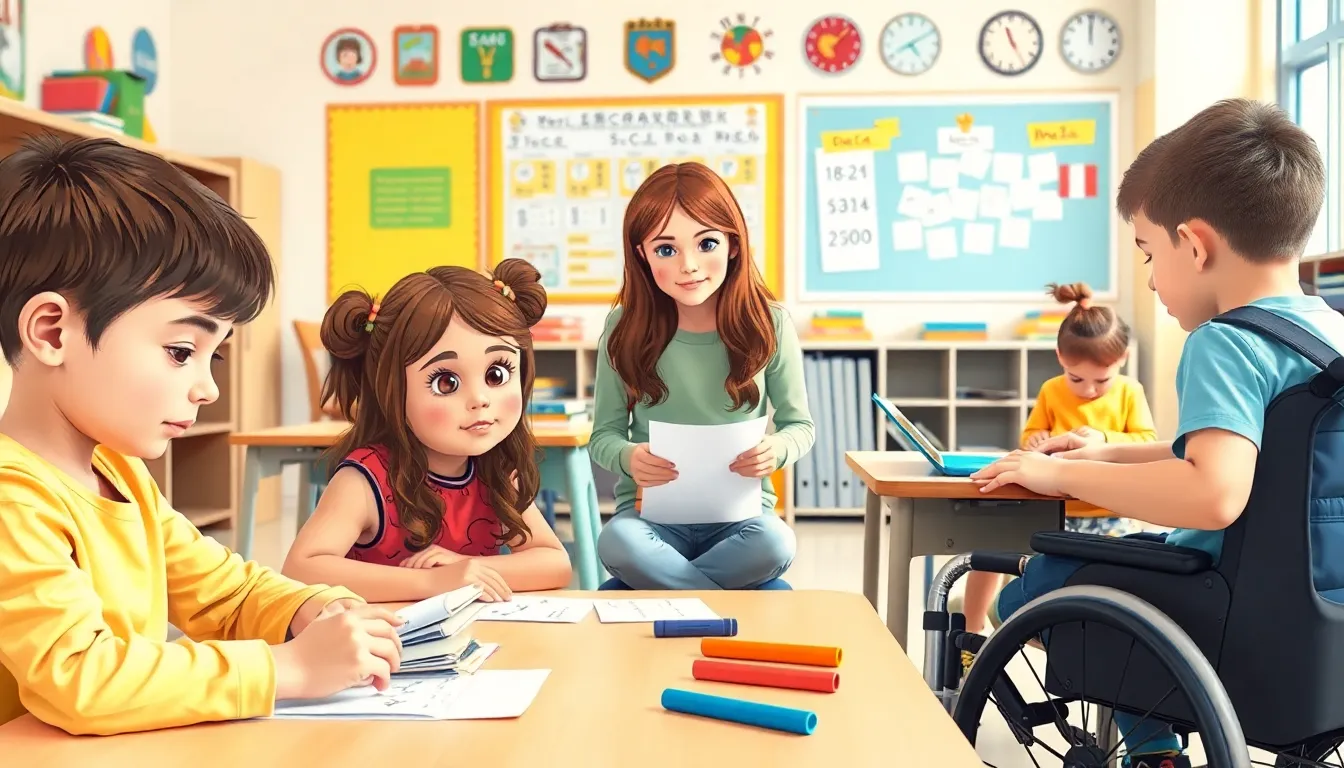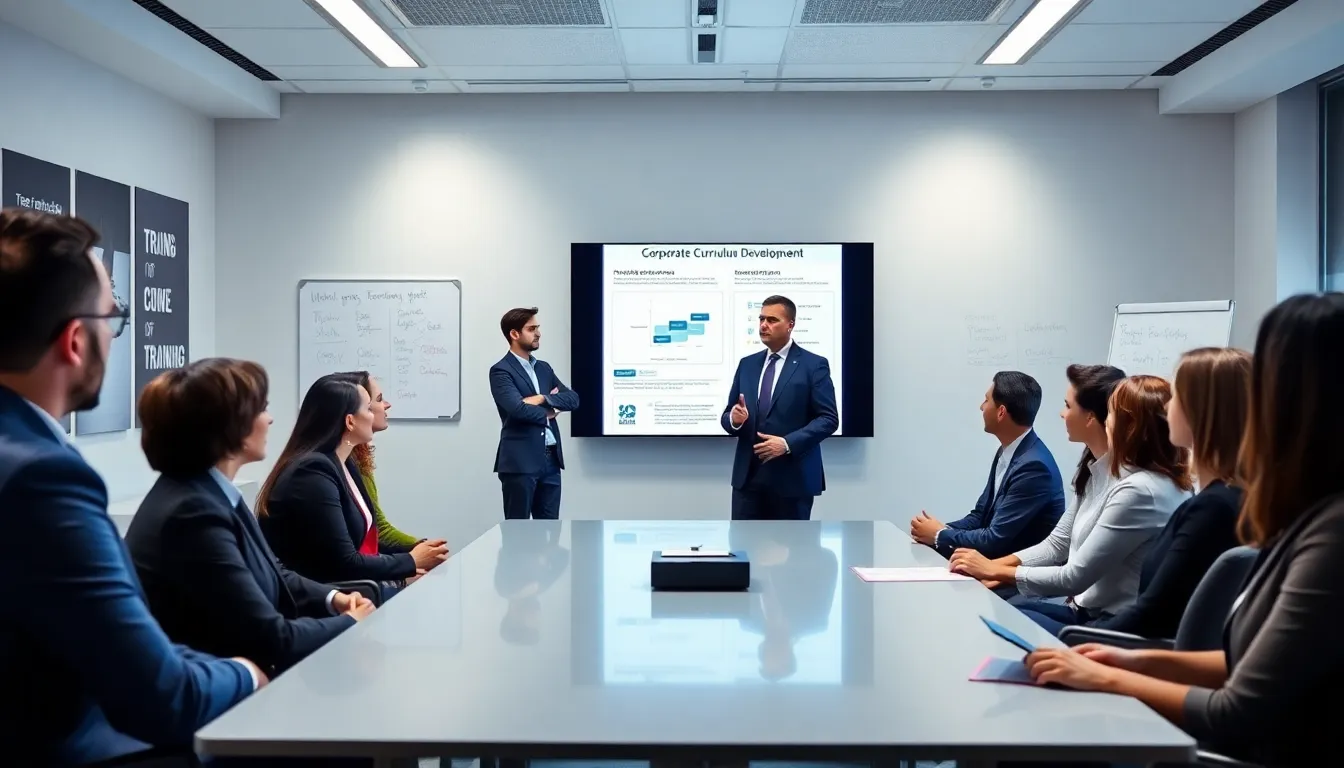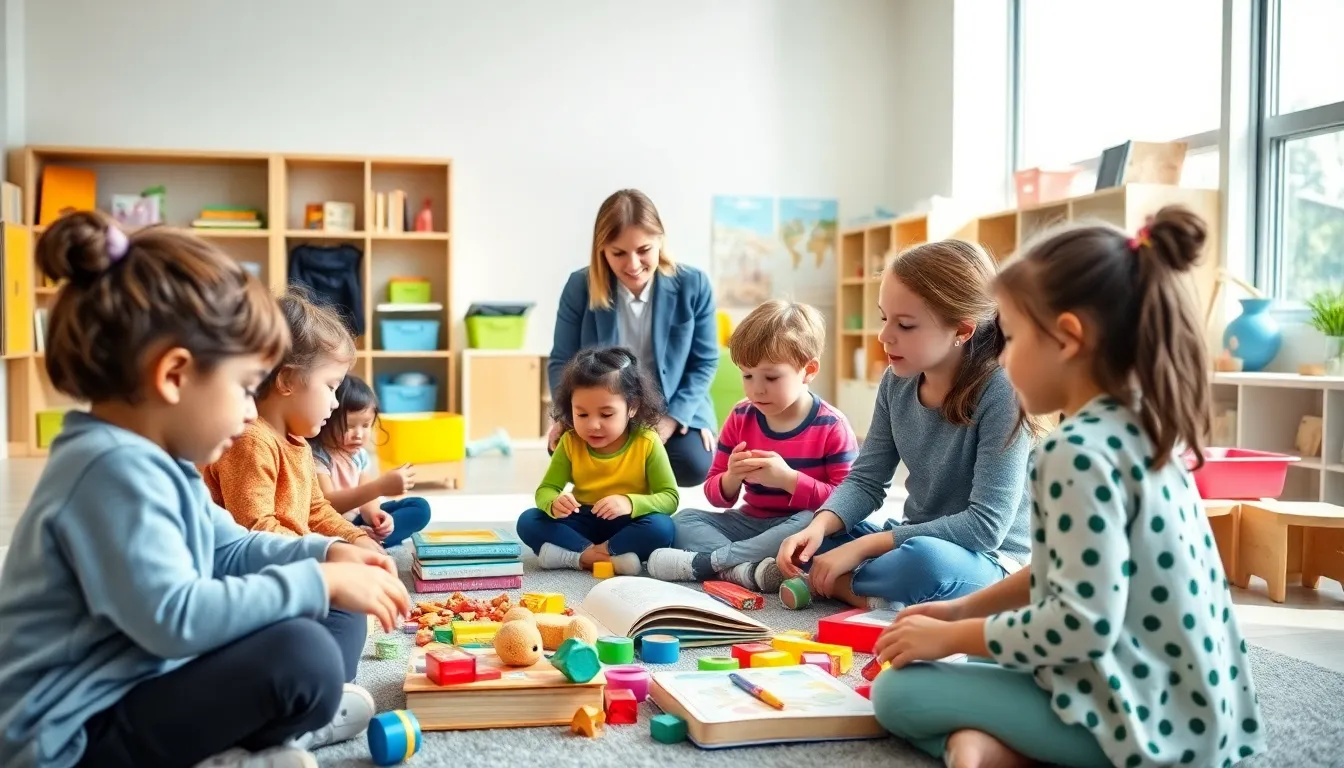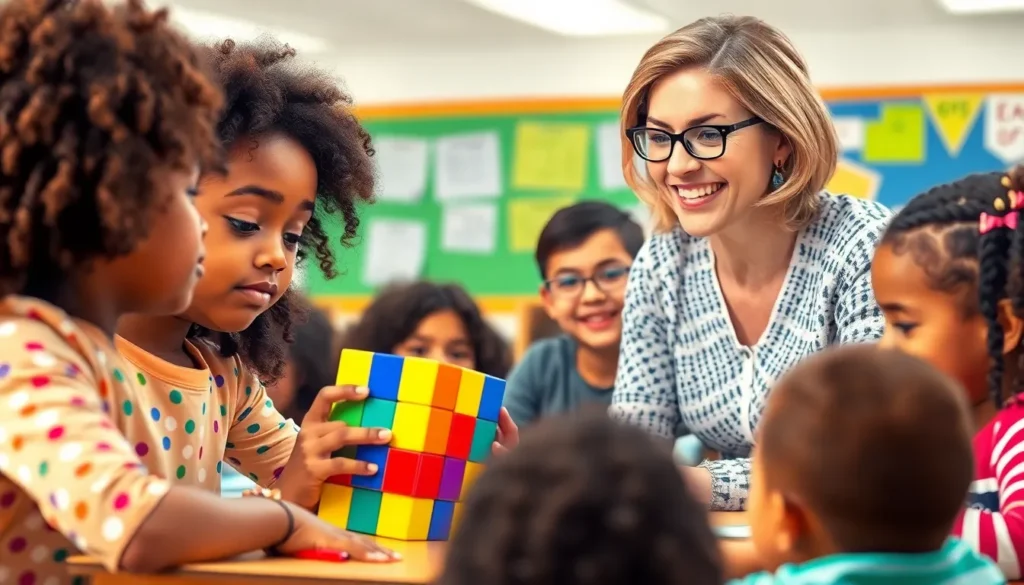Table of Contents
ToggleNavigating the world of special education needs can feel like trying to solve a Rubik’s Cube blindfolded. With unique challenges and diverse requirements, it’s no wonder parents and educators often find themselves scratching their heads. But fear not! Understanding these needs is the first step toward unlocking a world of potential for every child.
Understanding Special Education Needs
Understanding special education needs involves recognizing the distinct challenges and requirements that students face. This comprehension plays a vital role in promoting equitable educational experiences.
Definition and Scope
Special education refers to specially designed instruction tailored to meet the unique needs of students with disabilities. Such needs encompass physical, cognitive, emotional, and developmental challenges. Federal law mandates that all students access a free appropriate public education, ensuring compliance with the Individuals with Disabilities Education Act (IDEA). This act covers various disabilities, including learning disabilities, autism spectrum disorders, and speech or language impairments. Additionally, services vary in scope and can include individualized education programs (IEPs) as well as accommodations in general education settings.
Importance of Special Education
Special education serves a crucial purpose in fostering inclusive learning environments. It allows students with diverse needs to thrive academically and socially. Research indicates that early intervention can significantly improve outcomes for these students, enhancing their academic performance and social skills. Such education not only supports academic growth but also builds self-esteem, promoting independence and self-advocacy. Collaboration among educators, parents, and specialists further enriches the educational experience, aligning support with each child’s individual requirements.
Types of Special Education Needs

Special education needs encompass a variety of disabilities affecting children’s learning processes and behaviors. Understanding these types aids in developing effective educational strategies.
Learning Disabilities
Learning disabilities impede efficient processing of information, affecting academic performance. Dyslexia, a common learning disability, challenges reading fluency and comprehension. Students with dyscalculia struggle with math concepts, while dysgraphia affects their writing capabilities. Effective interventions, including specialized teaching methods, help mitigate these challenges. Early identification streamlines support and accommodations, enabling children to thrive academically.
Emotional and Behavioral Disorders
Emotional and behavioral disorders disrupt a child’s ability to function in educational settings. Conditions such as anxiety disorders often manifest as excessive worry or fear, impacting daily activities. Oppositional defiant disorder (ODD) leads to negative behaviors, making it difficult for them to follow rules. Effective treatment strategies emphasize behavioral interventions and counseling, fostering positive coping mechanisms. Collaboration among educators, parents, and mental health professionals significantly enhances support systems.
Physical Disabilities
Physical disabilities impact mobility and bodily functions, affecting overall participation in school activities. Conditions such as cerebral palsy can cause muscle coordination issues, while spina bifida affects spinal cord formation. Accessibility measures in schools, including modified equipment and facilities, promote inclusivity. Specialized services like physical therapy aid in developing motor skills, allowing children with physical disabilities to engage more fully. Individualized support plans adapt to each student’s unique requirements.
Strategies for Supporting Students
Implementing effective strategies is crucial for supporting students with special education needs. Tailored approaches ensure all students can thrive in the learning environment.
Individualized Education Plans (IEPs)
IEPs serve as foundational tools in special education. They outline specific goals and tailored strategies for each student. Teachers collaborate with parents and specialists to create these plans, ensuring that individual needs are met. Regular assessments track progress and adjust goals as necessary, helping educators adapt instruction. Compliance with the Individuals with Disabilities Education Act (IDEA) emphasizes the importance of IEPs in providing educational access.
Differentiated Instruction
Differentiated instruction accommodates diverse learning styles and abilities. Teachers vary content, process, and product based on each student’s strengths and challenges. Small group activities foster peer collaboration and personalized support. Engaging materials and varied assessments enhance motivation and understanding. Flexibility within the classroom enables teachers to meet individual needs while promoting inclusivity.
Use of Assistive Technology
Assistive technology plays a vital role in enhancing learning. Tools like speech-to-text software and specialized reading programs aid students with disabilities. These resources empower learners to engage with curriculum content effectively. Educators can customize technology use to fit specific challenges, improving accessibility. Incorporating assistive technology fosters independence and boosts academic achievement among students with special education needs.
The Role of Educators and Parents
Educators and parents play crucial roles in addressing special education needs. Their collaboration is vital for creating an effective support system for students.
Collaboration and Communication
Collaboration between educators and parents strengthens the educational experience for students with special needs. Regular communication ensures that everyone remains informed about a child’s progress and challenges. Sharing insights can lead to customized strategies that fit each student’s unique situation. Meetings, phone calls, and emails enhance this collaboration by creating a consistent dialogue. Both parties should strive for transparency, fostering trust and commitment to the child’s educational journey. Engaging specialists in discussions can also bring additional expertise to tailor interventions effectively. Prioritizing frequent communication helps maintain a united front in supporting the child’s development.
Advocacy for Special Education Needs
Parents and educators must advocate for the rights of students with special education needs. Activism ensures that schools meet legal obligations under the Individuals with Disabilities Education Act (IDEA). Educators can influence policy by participating in training and professional development opportunities related to special education. Parents should familiarize themselves with their child’s rights and available resources, empowering them to speak up when necessary. Joining parent-teacher organizations can amplify voices and promote awareness within the community. Effective advocacy leads to better access to resources, inclusive programs, and individualized support, enhancing educational outcomes. Prioritizing advocacy creates a nurturing environment for all students to flourish.
Challenges in Special Education
Special education faces several significant challenges that impact the effectiveness of support for students. Addressing these challenges is essential to enhance educational experiences and outcomes.
Resource Limitations
Resource limitations pose a major obstacle in special education settings. Many schools struggle to provide sufficient funding for specialized staff and materials. Limited access to training prevents educators from developing the necessary skills to support diverse needs. Many districts experience shortages in special education teachers and paraprofessionals, leading to large class sizes that hinder personalized attention. Insufficient availability of assistive technology also limits opportunities for students to engage fully in the learning process. When resources are inadequate, implementing tailored educational interventions becomes increasingly difficult, impacting students’ progress.
Stigma and Misunderstandings
Stigma and misunderstandings surrounding special education create additional barriers. Many individuals hold misconceptions about disabilities, resulting in negative stereotypes. This stigma can lead to isolation or social exclusion for students with special education needs. Misunderstandings about the capabilities of these students often result in lowered expectations, undermining their potential. Educational institutions sometimes fail to provide adequate training for staff, perpetuating these misconceptions. A lack of awareness among peers can contribute to an unwelcoming environment, making it crucial to promote inclusive practices and foster understanding within school communities.
Addressing special education needs requires a dedicated and informed approach. By fostering collaboration among educators parents and specialists it’s possible to create an environment where every child can thrive. Understanding the unique challenges faced by students with disabilities is essential for developing effective strategies that promote inclusivity and academic success.
Advocacy and awareness play pivotal roles in dismantling barriers and misconceptions surrounding special education. By prioritizing open communication and tailored interventions schools can ensure that all students receive the support they need. Ultimately the commitment to understanding and addressing special education needs leads to a brighter future for every child.







